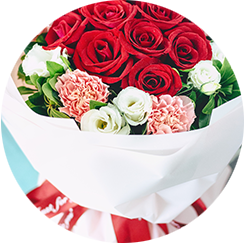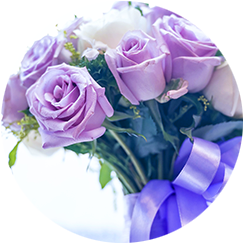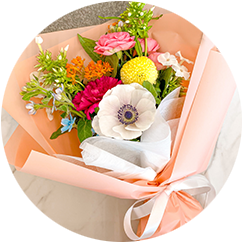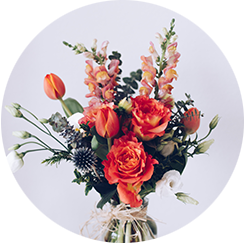Find Out How Your Birth Flower Speaks to Who You Are
Posted on 22/05/2025
Find Out How Your Birth Flower Speaks to Who You Are
Did you know that just like birthstones, each month of the year is associated with a special flower? These birth flowers carry unique meanings and characteristics that can offer an insightful glimpse into your personality and even your fate. If you've ever wondered what your birth flower says about you, you're about to embark on a colorful journey of self-discovery!

What is a Birth Flower and Why Does It Matter?
A birth flower is a symbolic blossom assigned to each month of the year. The tradition spans many cultures, offering an alternative to the well-known birthstone. These flowers, with their historical and cultural connotations, are thought to reflect the traits and spirit of people born during their respective months.
- January - Carnation
- February - Violet
- March - Daffodil
- April - Daisy
- May - Lily of the Valley
- June - Rose
- July - Larkspur
- August - Gladiolus
- September - Aster
- October - Marigold
- November - Chrysanthemum
- December - Narcissus
Let's dive deeper into what your birth flower reveals about your personality and how you can use this knowledge to express yourself or find the perfect thoughtful gift for loved ones.
Detailed Guide to Each Birth Flower and Its Meaning
January: Carnation (The Loyal Companion)
Carnations are well-known for their ruffled petals and long-lasting charm. In the language of flowers, they symbolize deep love, fascination, and distinction. If you were born in January, you are often viewed as strong-willed, loyal, and passionate -- just like the carnation whose symbolism is wrapped in steadfast affection.
- Main Traits: Dedication, loyalty, resilience
- Fun Fact: In some cultures, different carnation colors bear unique meanings -- for example, pink for motherly love and red for admiration.
February: Violet (The Dreamy Protector)
The violet stands for modesty, humility, and faithfulness. If February is your birth month, you are likely a compassionate and gentle soul with a quietly powerful presence. The history of violets in mythology and art frequently intertwines with the themes of protection and spiritual awareness.
- Main Traits: Loyalty, intuition, wisdom
- Fun Fact: Violets are edible and were once used in medicinal remedies for their calming effects.
March: Daffodil (The Optimistic Visionary)
The daffodil blooms with the promise of spring, representing new beginnings, hope, and rebirth. March-born individuals exude a vibrant optimism and inspire others to look on the bright side of life. Just as daffodils are heralds of the end of winter, March babies can light up any room they enter.
- Main Traits: Creativity, enthusiasm, determination
- Fun Fact: In Wales, seeing a daffodil on the first day of the year is considered to bring good fortune for the rest of the year.
April: Daisy (The Pure-hearted Adventurer)
The daisy is the embodiment of purity, innocence, and playful energy. April-born individuals are youthful at heart and value honesty above all. Their straightforward approach to life and adventure inspires trust and admiration in friends and family.
- Main Traits: Joy, simplicity, transparency
- Fun Fact: The word "daisy" comes from "day's eye" because the flower opens its petals at dawn.
May: Lily of the Valley (The Humble Enchanter)
Lily of the Valley exudes sweet fragrance and delicate charm. This birth flower highlights humility, sweetness, and a sense of renewal. If you were born in May, others may see you as unassumingly elegant and sincere, with a knack for bringing peace wherever you go.
- Main Traits: Sincerity, tenderness, optimism
- Fun Fact: Lily of the Valley is a traditional choice in royal wedding bouquets, including that of Kate Middleton.
June: Rose (The Passionate Charmer)
Known globally as the symbol of love, the rose holds a deeper meaning for June-borns. Roses signify romance, passion, and enduring beauty. If June is your month, you likely have a captivating personality and a natural ability to uplift others with your strength and compassion.
- Main Traits: Devotion, sensitivity, charisma
- Fun Fact: Different rose colors have different meanings: red for love, yellow for friendship, white for purity.
July: Larkspur (The Light-Hearted Friend)
Larkspur is synonymous with levity, open heart, and positivity. Those with July birthdays are often open-minded, witty, and loyal. Just as the larkspur grows tall and bright, so do July-borns lift the spirits of everyone around them.
- Main Traits: Cheerfulness, generosity, sincerity
- Fun Fact: Larkspur comes in several colors, each adding layers to its symbolic meaning -- pink for fickleness, white for happiness, and purple for first love.
August: Gladiolus (The Strong-willed Leader)
The gladiolus is named after the Latin word for sword, "gladius," and is associated with strength, integrity, and perseverance. People born in August tend to be natural leaders, unafraid to take bold action and chase their ambitions. Their unwavering sense of purpose makes them truly stand out.
- Main Traits: Courage, honesty, ambition
- Fun Fact: Gladiolus flowers were once associated with gladiators and used in ancient times as a symbol of victory.
September: Aster (The Thoughtful Advisor)
Traditionally representing wisdom, faith, and valor, asters are star-like blooms that light up the late summer garden. September-borns value thoughtfulness and loyalty, lending dependable guidance to those in their circle.
- Main Traits: Patience, reliability, intelligence
- Fun Fact: The name "aster" comes from the Greek word for star, perfectly describing the flower's shape.
October: Marigold (The Warm Spirit)
The bright and bold marigold represents creativity, warmth, and determination. Those with October birthdays are often admired for their magnetic personalities and their ability to bring people together, even in the hardest times.
- Main Traits: Confidence, energy, creativity
- Fun Fact: In many cultures, marigolds are used in festivals and celebrations for their vibrant beauty.
November: Chrysanthemum (The Loyal Optimist)
Chrysanthemums, with their intricate petals, symbolize loyalty, joy, and abundance. November-born people shine with positivity and resilience, inspiring others with their enduring optimism.
- Main Traits: Resilience, adaptability, cheerfulness
- Fun Fact: In Japan, the chrysanthemum is a symbol of the emperor and the imperial family, signifying perfection.
December: Narcissus (The Hopeful Dreamer)
The narcissus (often the paperwhite variety) blooms in winter, reflecting hope, renewal, and unwavering faith. December-born individuals are known for their strong inner vision and ability to remain hopeful, even in the face of adversity.
- Main Traits: Hopefulness, mindfulness, perseverance
- Fun Fact: In Greek mythology, the narcissus was associated with both self-love and transformation.
Personalities Unfolded: How Your Birth Flower Connects to Your Character
Every birth month flower offers a reflection of your innate strengths and the energy you bring to the world. Whether your flower is the delicate lily of the valley or the commanding gladiolus, the symbolism offers a way to celebrate and embrace your uniqueness.
- January - Carnation: Loyal, dependable, and passionate
- February - Violet: Gentle, spiritual, and wise
- March - Daffodil: Optimistic, hopeful, and creative
- April - Daisy: Innocent, joyful, and honest
- May - Lily of the Valley: Humble, kind, and refreshing
- June - Rose: Romantic, emotionally deep, charismatic
- July - Larkspur: Cheerful, affectionate, open-hearted
- August - Gladiolus: Determined, strong, inspirational
- September - Aster: Wise, loyal, thoughtful
- October - Marigold: Creative, energetic, bold
- November - Chrysanthemum: Resilient, joyful, steady
- December - Narcissus: Hopeful, imaginative, steadfast
Expressing Yourself with Your Birth Flower
Many individuals use their birth flower meaning as personal inspiration. Whether it's through personalized jewelry, tattoos, or floral arrangements for special occasions, your birth flower is a symbolic touchstone for your journey in life.
Ways to Incorporate Your Birth Flower into Your Daily Life
- Wear jewelry or accessories featuring your birth flower to keep your personal strengths close at hand.
- Decorate your workspace with artwork or fresh blooms for inspiration and a confidence boost.
- Choose your birth flower for celebrations or bouquets to infuse occasions with deeper meaning.
- Gift birth flower-themed items to loved ones as a thoughtful touch that celebrates their unique qualities.
- Plant your birth flower in your garden as a living reminder of your inner attributes and growth.
The Cultural Impact and History of Birth Flowers
Throughout history, flowers have carried a language of their own. The tradition of linking a flower to your birth month can be traced back to ancient Roman and Greek societies, where birth flowers were believed to offer protection, fortune, and wisdom. In the Victorian era, the "language of flowers" or floriography became a popular trend, used to send messages through carefully selected bouquets.
Learning about your birth flower not only enhances self-awareness but also connects you to centuries of rich cultural history and tradition. By understanding what your birth flower says about you, you become a part of a meaningful, ongoing story.

Find Out What Your Birth Flower Says About You Today
Reflecting on your birth flower's symbolism can deepen your understanding of yourself and your life's path. Whether you're celebrating a birthday, searching for a unique gift, or simply exploring personal growth, your birth month flower offers a beautiful and inspiring starting point.
As you discover how your birth flower speaks to who you are, consider sharing this knowledge with family and friends. Personalized flower meanings not only add sentimental value to gifts and celebrations but also foster deeper understanding in your relationships.
Conclusion: Let Your Birth Flower Guide You
In the vibrant tapestry of nature, each flower tells a story. Find out how your birth flower represents your personality, strengths, and aspirations. Embrace its meaning and let its symbolism remind you of your inherent beauty and potential every day. The next time you see your birth flower in a bouquet or garden, take a moment to celebrate the qualities that make you - or your loved one - truly special.
For more insights into birth flowers and their meanings, bookmark this guide and refer back anytime you want a burst of floral inspiration. Share the language of your birth flower and watch your world bloom!
Latest Posts
Identify the Flower That Celebrates Your Identity
Employ proven techniques for stunning long-lasting blooms
8 mind-blowing facts about sunflowers that will surprise even experts





